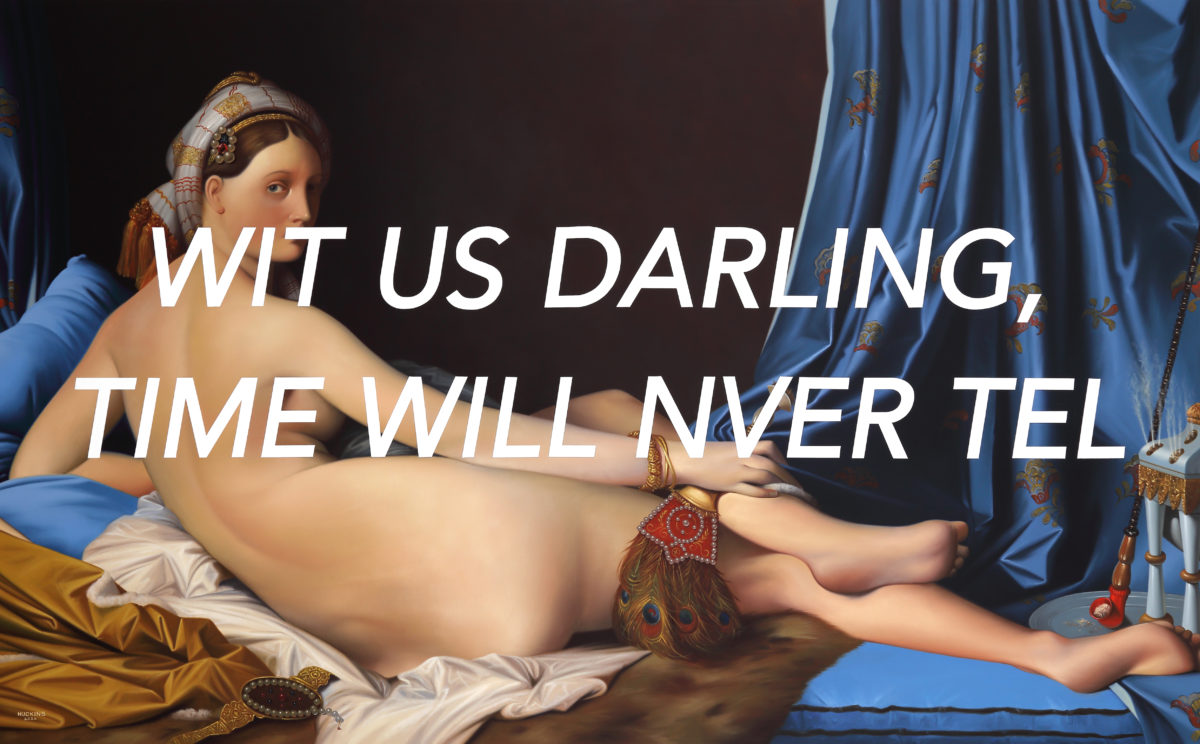Modernism is staging its third one-person exhibition of new paintings by Shawn Huckins.
Titled “All You Had To Do Was Call,” this series of paintings continues Huckins’ broad theme of combining classical portraiture with digitally driven communication.
The twist to this exhibition is that every painting contained within the show originates from a different European country.
“I wanted to highlight the trend of the growing phobia in younger generations of speaking on the phone, who often would rather communicate via text, or social media. With our smart technologies, communication with our loved ones, local and abroad, has become effortless and instantaneous, but lacks an emotional connection. How often have we had to decipher someone’s text message as frustration, sarcasm, or a bad joke?” says Huckins.
As with previous works, each of Huckins’ canvases is based on a 18th or 19th century painting which he meticulously copies by hand, superimposing text culled from social media. Despite extreme differences in idiom, Huckins finds 21st language to elaborate or comment on the content of classic genre pictures and portraits.
For instance, Huckins recreates Jean Auguste Dominique Ingres’ 1814 “Grande Odalisque” with the words WIT US DARLING, TIME WILL NEVER TEL.
The portrait “Admiral Sir Chaloner Ogle,” composed by the English society painter George Romney, is embellished with the word Mood.
And a portrait of Francis II, the last Holy Roman Emperor, receives the oft-tweeted phrase FELT CUTE, MIGHT DEL L8TR across his well appointed figure.
Huckins is particularly interested in the impact of technology on language.
“Technology influences how much we know and what we believe, as well as how quickly and intelligently we convey our ideas,” he says. “As goes our grammatical literacy, do our social and cultural literacies follow?”
Attempting to find social media jargon to speak for a time in history when letters were carefully composed by pen, he tests how much can be said in a tweet, and how much is abandoned. However, in the tradition of Ed Ruscha, Huckins’ artwork is as much about painting as language, and depends on his extreme skillfulness for its visual impact.
As the critic Michael Paglia writes in Art Ltd., “The refined sensibility of the original paintings and of the formal portrait photos that Huckins references sets up extreme contrasts to the vulgar world of our own time, which is laid bare by the meanings inherent in the inserted text.”
The contrast is crucial for Huckins, and works both ways; the edgy language encourages us to look at historical paintings and photographs with fresh eyes. Neither venerating nor vilifying the language of social media, Huckins refers to texting as “a growing and evolving method of communication which changes as does our world.”
Building on Pop Art and the appropriations of Pictures Generation masters such as Richard Prince, Huckins’ paintings confront our latest mode of expression to reveal what has changed in our world and what remains perennially the same.
https://www.modernisminc.com/exhibitions/
https://www.duclosculturalcurrents.com/eva-lake-her-highness-at-modernism/
La Grande Odalisque: With Us Darling, Time Will Never Tell, 2020, oil & acrylic on canvas, 48 x 78 inches

